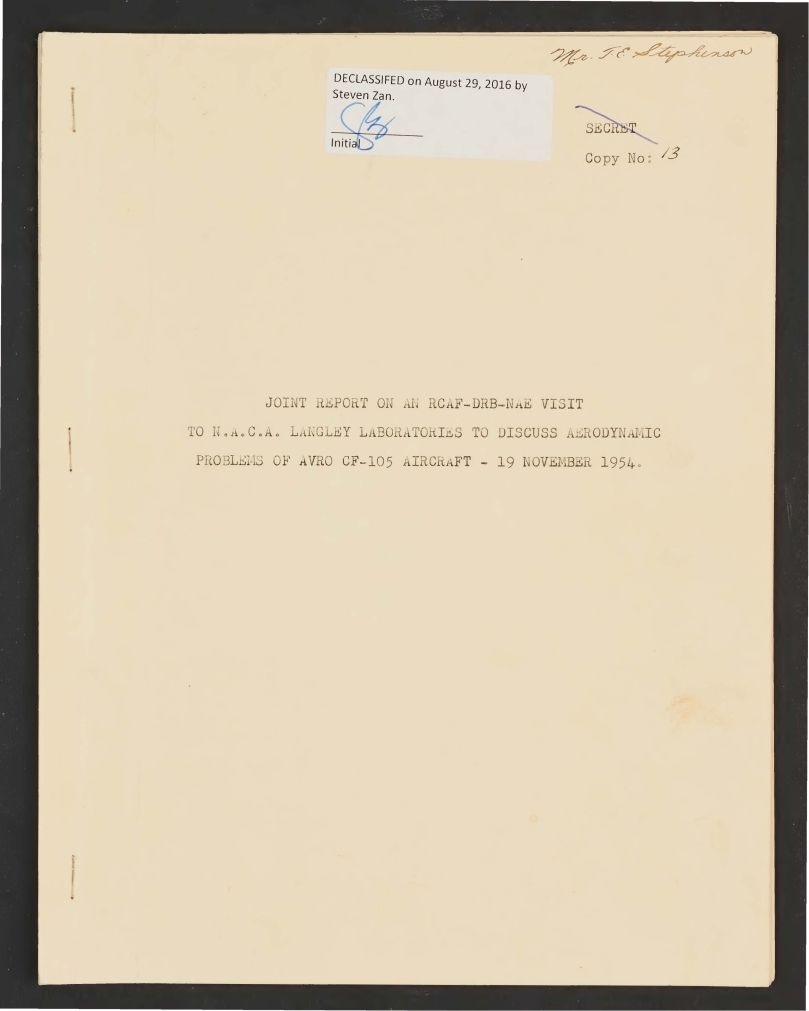Joint report on an RCAF-DRB-NAE visit to N.A.C.A. Langley Laboratories to discuss aerodynamic problems of Avro CF-105 Aircraft: 19 November 1954
Name/Title
Joint report on an RCAF-DRB-NAE visit to N.A.C.A. Langley Laboratories to discuss aerodynamic problems of Avro CF-105 Aircraft: 19 November 1954Entry/Object ID
3406Category
Report - Technical

